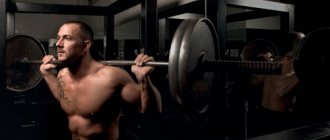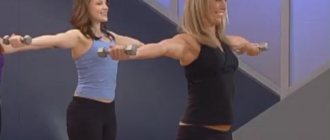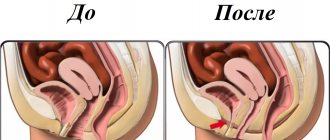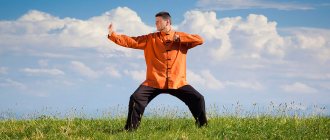Without exaggeration, Hatha Yoga can be called a universal tool for human development – physical and spiritual. This is a whole philosophy aimed at finding one’s place in the world, creating a life without violence against oneself, the world around one, developing the ability to adapt to changing circumstances, while maintaining one’s own individuality.
Hatha yoga cannot be viewed solely as fitness: by performing exercises (asanas, pranayama, mudras, shatkarmas), listening and chanting mantras, a person begins to feel unity with everything that exists - the world soul (atman). Even if you do not pursue such a lofty goal, with regular training you can feel that you are becoming calmer, more peaceful, and that there is more harmony in your relationships with other people and the world.
Of course, to achieve such results, it is important to practice hatha yoga according to the rules. And, most importantly, do this without overcoming yourself, gently, as much as you have enough energy at the current moment in time.
Hatha yoga is not fitness
There are quite a few differences between hatha yoga and regular yoga, which is often offered in fitness clubs. Let's look at a few points by which you can recognize how hatha-yoga differs from yoga.
- Warm-up in Hatha Yoga usually begins with meditation, followed by breathing exercises (pranayama). In standard fitness yoga, joint gymnastics or the “Salutations to the Sun” complex are used as a warm-up (discussed below).
- Time to complete the exercise (asana). In hatha yoga, coordination of movements and breathing (inhalation, exhalation, breath holding) is mandatory, and time is not limited - everything is individual. In regular yoga, the pace is more dynamic: each pose or exercise is given 40-70 seconds.
- A set of exercises. Usually, in one hatha yoga class, one thing is worked out - the spine is stretched, the hips are stretched, and so on. In standard yoga, an approximate balance of static and dynamic tasks is maintained.
- The purpose of the exercise. Unlike regular yoga, hatha yoga is aimed at developing the skill of relaxing your body and observing it - in any position, even the most uncomfortable one. In fitness yoga, exercises are chosen to target specific areas of the body, build muscle, and burn fat.
- Periodicity. Hatha yoga is practiced every day, most of the time in the morning, but it can also be done in the evening. Yoga for fitness is performed three to four times a week.
- Idea. People who practice hatha yoga strive for harmony - their psyche, soul and body, themselves and the world, which contributes to dissolution in the universe. Regular yoga classes are usually chosen to lose weight, tighten your figure, and look attractive.
- Philosophical aspect. Hatha yoga supports the philosophy of the ancient Indian Vedas, which is alien to publicity and competitive spirit. Many practitioners of this trend adhere to a vegetarian diet. Ordinary yoga actively goes out to the public, including in the virtual space. Instagram marathons, yoga championships are held, records are set.
What are the benefits of hatha yoga?
Since in this direction the body is considered holistically, as a single system, hatha yoga has everything to bring it into a healthy state and keep it flexible for many years. In India, there are practitioners who have turned ninety and ninety-five, and they still easily do the splits and do the “birch”. From the point of view of bodily health, hatha yoga helps in fitness
- maintain joint mobility;
- slow down muscle degradation that occurs with age;
- relieve stress;
- reduce the load on the nervous system;
- improve the functioning of the cardiovascular system;
- normalize the functioning of digestion;
- relieve back pain, keep the spine flexible, which is a prerequisite for a youthful body;
- improve coordination;
- strengthen muscles without overload - through a combination of strength training and stretching.
When discussing the benefits and harms of hatha yoga, abuse of this philosophy is sometimes cited as one of the negative aspects. Some people use the system of maintaining health and finding harmony with the world to realize their own selfish goals, for example, involving their contemporaries in various sects. However, a thinking person will always be able to determine the line that separates philosophy from fanaticism.
What is it and where does it come from?
Start getting acquainted with yoga by studying the history of its origin. We will not find in any source a specific date when a person first began to preach yoga. This definitely happened before our era (the sacred texts indicate the 1500s). At the same time, meditative practices were mentioned for the first time, the main postulates were touched upon and people were depicted sitting in the lotus position.
Today, any instructor will tell you that yoga is a combination of static physical exercises and spiritual practices such as meditation. What else do we know? Originated in India. No specifics... You need to obtain all the knowledge yourself! Exercises - asanas - have a huge impact on a person’s emotional state, make the body strong, and the body resistant to a variety of diseases and even prolong life.
There are several directions in yoga: Iyengar, Hatha, Bikram yoga (a lesser-known direction in Russia, gradually gaining popularity), using hammocks, Kundalini, Ashtanga. Separately, we can highlight Pilates - a system of physical exercises that promote the restoration of the body after illnesses and operations, suitable for regular practice at any age (less dynamic, not requiring special training). Previous articles have already given recommendations on how to choose a class for classes. The main principle is the trial method.
People who have once fallen ill with yoga understand perfectly well that in order to study it it is necessary to go through several stages. In Ashtanga there are 8 steps:
- Yama are ethical rules that must be followed every day. At this stage, it is important to understand how real masters live. Yama is equated to our Christian commandments: “do not steal,” “do not kill,” etc. Basically, this is non-harm, non-appropriation of someone else’s property and abstinence (from promiscuity, bad habits, etc.).
- Niyama is spiritual development (as well as honoring the gods).
- Asanas - the physical aspect - regular exercise.
- Pranayama - working with breathing, achieving an optimal state with the help of breathing (fighting stress, nervousness, fears, etc.).
- Pratyahara - awareness, concentration, the ability to look deep into oneself.
- Dharana is complete abstraction from the outside world, increased concentration, attention on one point.
- Dhyana is a meditative, altered state of mind (the ability to completely disconnect from the outside world in order to achieve enlightenment - the last stage).
- Samadhi is a state of soul in which “everything impossible becomes possible,” insight and wisdom.
What makes people, no longer at a young age, master complex poses, do the splits for the first time and learn mantras - prayers, each sound of which has a sacred meaning (a powerful weapon for fulfilling desires, healing, calming the soul)?
There are many reasons for this:
- the fastest and most effective way to become flexible and resilient (there are many strength exercises);
- improved health - strengthening the spine, cervical and back muscles. Stabilization of the cardiovascular system, normalization of blood pressure, relieving tension in the shoulders, lower back, legs. Help in cleansing the body, strengthening the nervous system;
- competent approach to weight loss;
- a variety of physical exercises and ready-made programs;
- the opportunity to study independently at home.
What other possible benefits from exercise are possible and whether they can harm the body are in the next section.
Who can do hatha yoga?
This practice is available to all people, without exception. In India, hatha yoga begins to be practiced from childhood, and then it is practiced throughout life.
However, in some situations it is better to postpone training. Thus, dynamic asanas should not be performed during an acute infectious disease. Inverted poses are not recommended for women in the first two days of the menstrual cycle. It is necessary to practice with caution after injury and surgical interventions. During pregnancy, it is important to choose certain exercises, and it is better to do them under the guidance of an experienced instructor.
What exercises are there in Hatha Yoga?
Hatha yoga practices are divided into several groups.
- Asanas are certain poses, static or dynamic. Among the most famous are chaturanga dandasana, which resembles a classic push-up; chair, warrior, boat, head down or up dog poses and others. All of them can be divided into exercises in a lying, sitting and standing position; tilts and deflections, twisting, inversions and balance. Some are aimed at increasing body endurance and increasing muscle strength, others at muscle stretching.
- Pranayama - breathing exercises during which you need to inhale, exhale, and hold your breath. At the same time, it is important to maintain maximum concentration on the process. Pranayama allows you to learn how to keep the energy in your body under control and direct it in a certain direction.
- Meditations can be performed during the class, after the exercises, and at the end of the workout, shavasana is performed. Practitioners take the corpse pose: they lie on the floor, closing their eyes, placing their arms and legs freely, moving them away from the body. For maximum relaxation, it is recommended to first stretch your feet and the top of your head in different directions, and then suddenly relax. To distract yourself from thoughts, you can focus your attention on the tip of your nose or on your breath, on the sound of a mantra or other object. This allows you to accumulate the energy received during practice.
- Mudras are special poses of the fingers. They are performed both separately and in combination with other exercises.
Hatha yoga as a philosophical doctrine also includes other practices. These include shatkarma (purification) - fasting, rinsing the nose, and so on. Acupuncture massage is used: impact on biological active points of the body during exercise.
In total, there are four steps in hatha yoga - the yamas (five moral principles, which include non-violence (ahimsa), asceticism (brahmacharya), truthfulness (satya) and others); niyamas - five rules for internal self-development and spiritual development, asanas - static poses, pranayama - breathing techniques.
Those who not only do exercises and meditation, but adhere to the philosophy of hatha yoga in everyday life, eat in a certain way. The menu contains no animal protein, a lot of dairy products, vegetable oils, nuts, and plant foods. The most important thing is not to overdo it. After all, one of the basic principles of hatha yoga is the absence of violence, including against oneself.
Yoga against aging - why not?
In the past few years, real scientists have conducted a number of interesting studies “without fear or reproach” regarding the relationship between such a scientifically proven phenomenon as cellular aging and the physiological results of esoteric practices such as yoga.
Cellular aging is accompanied by a gradual increase in oxidative stress and a decrease in telomere
, terminal regions of chromosomes that act as “protective caps” at the ends of these very long molecules. Both oxidative stress and telomere length can be measured, thus obtaining an objective assessment of the intensity of the aging process of a particular organism, as well as its biological age.
Scheme of the structure of telomerase, an enzyme that “sews” new nucleotides to telomeric DNA regions that shorten during cell division. Telomerase contains a short RNA molecule whose sequence is complementary to the telomeric repeat, and this RNA is used as a template for the synthesis of the 3' end of telomeric DNA. Having completed one section, telomerase shifts to repeat the cycle. The second strand of DNA is completed by DNA polymerase during the next cell division. On right:
Iberian shrew (
Sorex granarius
) chromosomes with telomeres stained
red
(fluorescent
in situ
(FISH)). It can be seen that telomeres differ significantly at different ends of the chromosome. From: (Zhdanova et al., 2007)
According to one theory, aging occurs due to the shortening of telomeres with age due to their incomplete copying during the process of DNA doubling. It is now known that telomere length and life expectancy are not directly related, but one more player needs to be taken into account - the enzyme telomerase
, capable of lengthening telomeric sections of DNA that spontaneously shorten during cell division. In general, the balance of the telomere-telomerase system can be considered one of the “quality indicators” of cell aging, and in humans, shorter telomeres are more likely to indicate unfavorable processes in the body. Although too long telomeres may indicate a high likelihood of developing cancer.
Yoga
is a religious and philosophical doctrine, part of which is a set of techniques and physical exercises performed with the aim of controlling mental and physiological processes to achieve a special spiritual state.
One of the techniques, the so-called meditation
, is used to achieve a state of inner silence and concentration. It should be noted that modern people often go to “yoga classes,” perceiving them simply as a set of physical exercises, and being in a “meditative state” is a way to disconnect from everyday problems for an hour or two. And no religion with philosophy.
But is it true that a combination of physical and breathing exercises and meditative states improves health and prevents cellular aging? Why not?
A 2012 review article summarized the results of approximately 40 years of experiments conducted to understand whether yoga helps with certain pathologies (Büssing et al., 2012). Scientists have mainly focused on psychiatric, cardiovascular and respiratory diseases. A bird's eye view shows that the conclusions of many of these studies are often contradictory. Some articles report the positive effect of yoga, which is expressed, among other things, in reducing stress levels and the manifestation of certain mental disorders. In other works, the authors do not provide convincing evidence in favor of this. Conducting a meta-analysis and drawing certain conclusions with confidence is hampered by the fact that the design of all these experiments was not always correct, especially with regard to early work. In addition, there are not so many of these works themselves, and access to those that were made in India is difficult. But still, the authors of the review designate this direction as promising. You just need to check everything according to modern standards.
The discoverers of telomeres were famous American geneticists: Hermann Muller, who worked with the fly Drosophila, a favorite of geneticists, and Nobel Prize laureate in physiology and medicine Barbara McClintock, whose research object was corn, no less beloved by breeders and genetic engineers.
How to dress for hatha yoga?
When practicing hatha yoga, everything matters: the place where the training is carried out, the environment, the people with whom you practice, and, of course, clothing. The equipment should be as comfortable as possible so as not to restrict movement and allow your body to move and breathe freely.
- In India, it is customary to dress in a long-sleeved, semi-fitting shirt and loose cotton trousers that taper at the ankles. In Russia, you can also follow this tradition, but not necessarily - more universal things are quite suitable. Experienced hatha yoga instructors recommend focusing on several basic criteria when purchasing clothes for classes.
- The first is high-quality knitted fabrics. An elastic top, T-shirt or T-shirt, leggings or shorts made of cotton or special synthetic material for sportswear are suitable. It is important that the material allows the body to breathe and does not rub the skin.
- The second is the style. It is better to choose tight or semi-fitting models without sleeves or with short sleeves. This way, clothing will not interfere with movements and will allow you to clearly see the location of your arms, legs, and muscle tension. T-shirts and pants that are too wide can get tangled and slip down, thereby interfering with your activities and distracting you. If you intend to exercise indoors, you can wear light clothes, but for training outside in cool weather, you need warmer things - for example, a sweatshirt.
- Third - cut. It is worth ensuring that while performing asanas and pranayamas, pants or shorts always cover the lower back: this way you won’t have to worry about your underwear being visible. Accordingly, you can pay more attention to practice.
- Fourth - shade. To fully concentrate on the process, experts recommend wearing a uniform in soft, non-garish colors. white and all pastel shades are a completely suitable solution. Black is good too.
- An important component of equipment for practicing hatha yoga is a special mat. It should be made of elastic elastic material and not slip. This will make it easier to hold position in static poses, such as downward-facing dog or warrior.
Good mood
Yoga is certainly associated with inner harmony, human awakening and getting rid of the ego. But this does not mean at all that you cannot stand on the mat in a bad mood.
Experienced yogis always advise being aware of and passing through all the emotions that arise during classes. For example, if during one of the most common poses, Downward-Facing Dog, you suddenly feel irritated, angry, or excited, you need to taste them with every cell of your body. The main thing is not to go into analysis. The essence of yoga is to be yourself, as you are, in every moment. This is exactly what every person should feel in order to heal, realize themselves and reach a qualitatively new level of life.
Where to begin?
It is recommended to start practicing with an instructor. Precisely because in hatha yoga it is important to learn to observe different aspects of the work of your body and psyche. You need to take the right positions to get the effect. An experienced trainer will tell you how to do asanas and notice from the outside what is wrong and gently correct it.
But this is not the only argument in favor of training with an instructor. An experienced practitioner will be able to introduce you to the basics of the philosophy of hatha yoga, accompanying the classes with clear explanations. This will allow you to fully experience the special flavor and feel the spirit of Indian philosophy.
It is optimal to find a good yoga center or instructor at a fitness center. But if this is not possible, you can practice online: many trainers today conduct classes in a distance format. There are many videos on the Internet demonstrating the simplest and more complex asanas and pranayamas.
First steps in hatha yoga
To perform asana or pranayama correctly, it is important to follow the algorithm very precisely. Let's first look at a few asanas that are suitable for beginners.
- Standing traction. Starting position – standing, feet as close to each other as possible. The back and neck are straight. The abdomen is slightly retracted, the muscles of the perineum are tense. Inhale by raising both arms up and placing your palms together. Stretch as hard as possible to stretch your spine. Then exhale - lower your folded hands down so that your palms are in front of your chest (as in prayer). Repeat the exercise, monitoring your breathing.
- Bend forward. From a standing position, extend your arms up, and then, keeping them straight, lean forward until your palms touch the floor. At the same time, it is important to strive to keep your back straight and stretch your pelvic bones upward. Inhale when your arms are raised, exhale when your arms and head are down.
- Warrior pose. The legs are spread as wide as possible so that they form a triangle. The right foot is turned parallel to the body, turning the body in the same direction. The left one is placed at an angle of 45 degrees. Arms are extended to the sides along the floor. Freeze in this position for a few seconds, tensing the muscles of the legs and arms, stretching the palms to the sides. Repeat, turning the body in the other direction.
- Downward facing dog. Standing straight with your feet together, raise your arms above your head, then bend down so that your palms touch your feet. With your hands on the floor, take a step or jump with both feet a meter and a half. The body forms a triangle: the feet tend to fully touch the surface of the floor, the palms rest firmly on it (fingers are spread as far apart as possible), the back is extended, the shoulder blades are straightened, the buttocks are stretched upward, the neck is relaxed. This exercise helps relieve tension from the spine and neck.
- Upward facing dog. Performed from a downward facing dog. From the triangular pose, you need to roll on your arms and legs so that your arms are positioned at a ninety-degree angle relative to the floor. At the same time, the head is pulled up, the neck is straightened, and the legs are straight. The spine in the lumbar region is curved.
And now - one example of pranayama: kapalabhati. Starting position – sitting with legs crossed in front of you (free pose). The left palm rests on the left knee. The fingers of the right are connected in cherry mudra: the index and thumb touch each other with their tips, forming a ring, the remaining fingers are free. The palm is placed near the face so that the thumb and forefinger pinch the nose: the first on the left side, the second on the right. Inhale and at the same time raise your thumb. Then they close the right nostril with it, and move the index finger away from the left - exhale. This is repeated any number of times.
Yoga - without harm to health
On June 21, Yoga Day is celebrated all over the world. We strongly associate yoga with headstand, “foot behind the ear” and a healthy lifestyle. Yoga has thousands of admirers in different parts of the world. They say that it heals the spine, helps to lose weight and improve bowel function, calms the nervous system and even improves potency.
Information attack on yoga
However, in the last decade, like any popular phenomenon, yoga has had its critics. American yoga instructor Glenn Black, who studied yoga in India and then taught for many years in New York, especially distinguished himself in this field. After teaching for many years, Mr. Black suddenly declared that the vast majority of practitioners should stop teaching forever.
In defense of this unexpected position, he cited many examples from his practice, yogis with “completely killed hips and wrists,” and the final argument was his own irreversibly damaged spine. Black believes this is the result of four decades of back bending and twisting in the lower back. Well, in four decades you can be disappointed in anything.
A terrible story from Ukrainian yoga teacher Andrei Sidersky has been repeated many times: in India, he saw a young yogi whose spine in the lumbar region had completely sunk deep into the body due to the practice of lumbar hyperbends. Someone else reported about a woman who suffered a stroke while performing one of the asanas, and off we go.
There were stories from students from regular fitness clubs who came to yoga to “correct their spine” and ended up with slipped discs. Traumatologists have had their say - according to their testimonies, during yoga classes people often suffer tendon ruptures, injure knee and shoulder joints, as well as the cervical spine. They started talking about how yoga is just quackery...
How serious is the threat?
So, have we really been cruelly deceived - and yoga is not at all a practice that is designed to improve health? Let's take a deep diaphragmatic inhale and exhale and look at it from a different angle.











